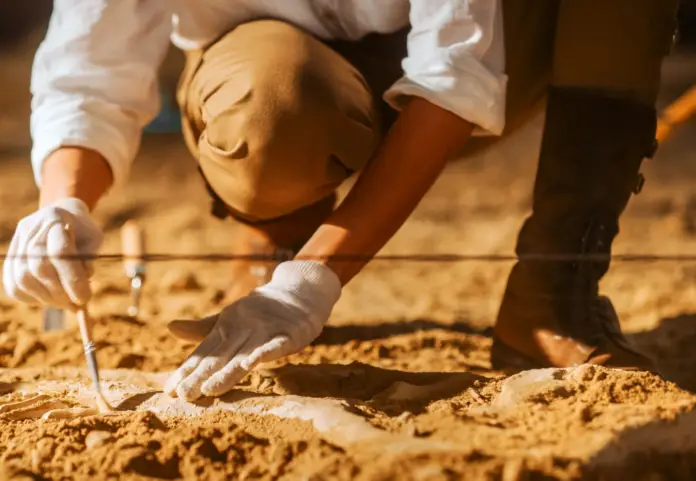
A new archaeological discovery surprised the scientists who were carrying out the salvage work on the Mayan Train, as on this occasion, they found nine objects of approximately 1,000 years of age buried in Front 3 of Section 7.
During this work, carried out by the National Institute of Anthropology and History (INAH), the specialists detected an enormous millennial treasure on the free road to Chetumal, near Xpujil, Campeche. Here we tell you what it is.
Neither milk nor yogurt: this food has twice as much calcium, is full of vitamin B and is the best of all to strengthen bones
The objects that were buried in the works of the Mayan Train
According to what was reported by the INAH, nine sgraffito patollis were recovered under conservation measures. It is a kind of boards divided by lines drawn on the ground that were part of a traditional game of the pre-Hispanic cultures of Mesoamerica.
This great discovery was detected on a stucco surface measuring 11.3 meters long by 2.8 meters wide, and in unfavorable conditions of conservation, according to experts.
“Most of them presented physical-chemical deterioration, such as fractures, disintegration, abrasion, detached material, loss of layers and cracking of the floor,” said Felix Camacho Zamora, coordinator of the Conservation Area of the Archaeological Salvage Project of the Mayan Train.
What were these surprising objects used for 1,000 years ago?
The institute explains that it is thanks to documentary sources that we know the use of these intriguing boards. Thus, the patollis are related to deities, offerings, religious rites and important calendar events. The word that gives the name to the game is of Nahuatl origin and means “beans”, thanks to the elements that were used as dice to move around the board.
On this occasion, not all the discovered panels are the same, as two were found to be circular, four were square and the rest were of a vague shape for the specialists, so they have not yet been able to identify what type they belong to.
The experts have the hypothesis that these patollis were made in the period corresponding to the Late Classic (600-900 AD), but they emphasize the need to carry out the ceramic analysis to be sure.
Source: cronista






